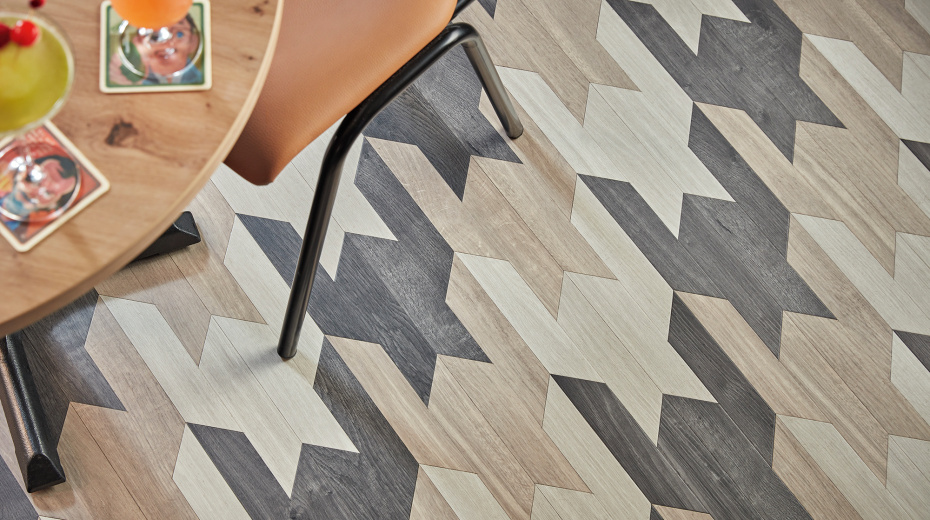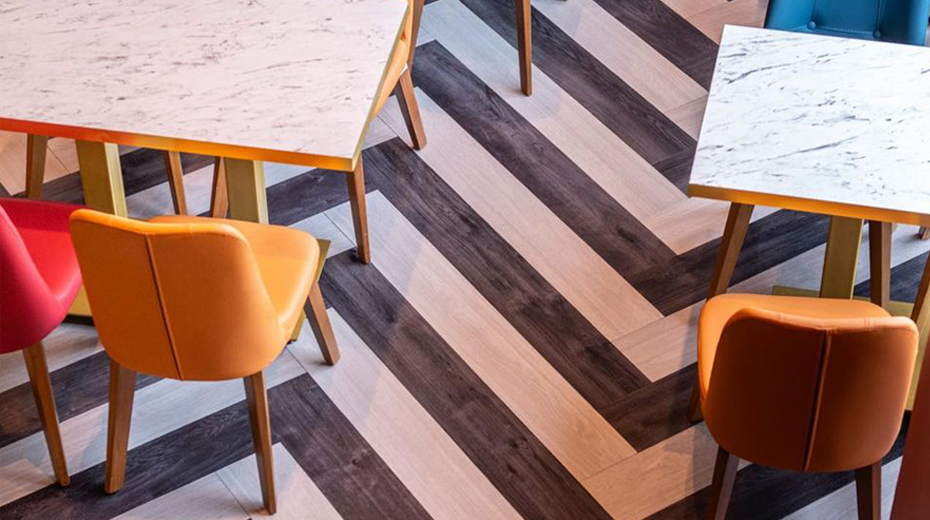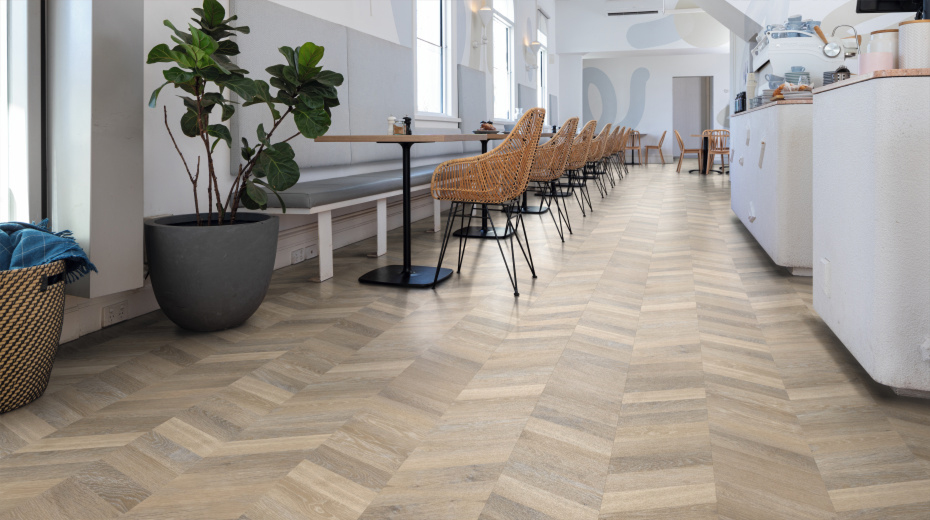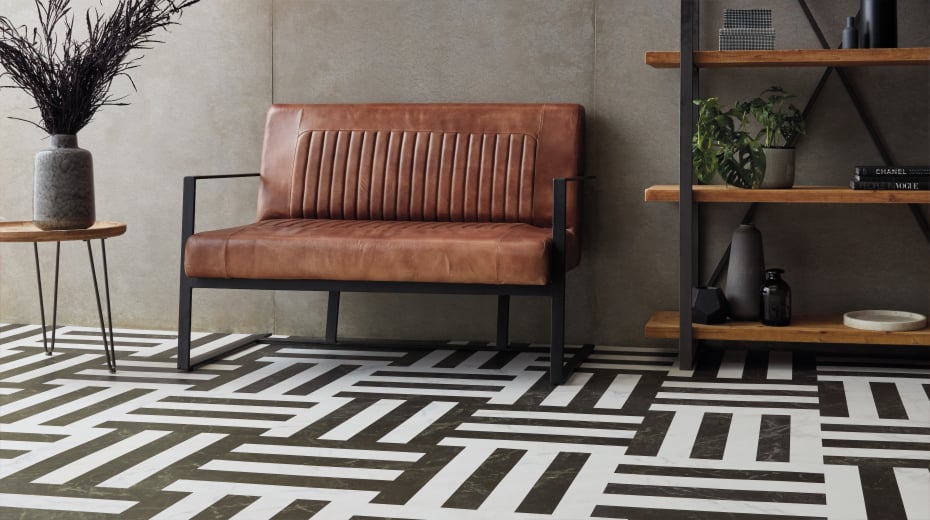Patterns in flooring can be used to influence navigation, helping users to understand the purpose of a space and support wayfinding.
A patterned floor can make use of laying directions and colour contrasts to suggest either transitional or stationary activities. Directional patterns will suggest where to walk while a non-directional pattern encourages people to stay in one place. A rhythmic pattern features regular repetitions that create a sense of scale and visual depth and can be used to introduce a feeling of speed.

StirrUps bar featuring Cool Grey Oak VGW113T, Ebony VGW89T and Nimbus Oak VGW125T
From the simplest laying patterns to complex designs in a blend of colours, styles and patterns, there are a number of rhythmic repeating pattern types:
- Regular rhythm - repeating exactly the same intervals in a 1-1-1 pattern. For example, a single wood design laid in a herringbone or chevron pattern
- Alternating rhythm – a more complex regular rhythm in a 1-2-1-2 pattern. For example, two designs laid alternately in a straight lay, herringbone or grid pattern
- Random rhythm – a more informal result can be achieved with two or more designs repeated in uneven intervals. Examples could include different sized tiles or stripes of varying thickness
- Symmetrical pattern – a space is divided into even sections and a linear pattern created into the central point.
There are many options when it comes to designing a rhythmic repeat pattern. The beauty of Karndean flooring is its outstanding versatility to create individual spaces that support wellbeing and reflect brand personality.
Here are just a few of the possibilities:
1. One design in a regular pattern. The simplest way to create visual interest and subtle directional guidance is to lay a single design in a diagonal, herringbone or chevron pattern. Where subfloor conditions are uneven or drying, or where timescales are challenging, our rigid core collections offer the option to achieve pattern as well as quick and easy installation.

Photo credit: @idconcepts @lahorekarahitooting. Ebony VGW89T and White Washed Oak VGW80T
2. Two designs in one pattern. Create an alternating rhythm with a combination of two complementary or contrasting designs in the same size, laid in a herringbone pattern, stripes or geometric grid.
3. One design in two or more patterns. Using a single design in different sizes and laying patterns will give each zone its own personality while providing a sense of continuity. Opt for a blend of patterns such as herringbone or broken chevron alongside straight lay or diagonal. Alternatively, create a bespoke design such as a symmetrical vanishing point, curves or waves.

4. Two or more designs in a random repeating pattern. Using a blend of complementary designs, create a random rhythm with, for example, stripes in varying thicknesses or a plaid pattern with a criss-cross of horizontal and vertical bands.
5. Multiple designs in complex patterns. Let your imagination run free with an intricate block pattern in a combination of wood and stone designs, such as a blend of full-sized and herringbone planks with geometric Kaleidoscope tiles. Alternatively, create a bespoke one-off design in hand-cut tiles.

Glacial Marble SM-ST27 and Midnight Marble SM-ST28
Whether opting for a less is more approach or a bolder eclectic style, the secret for a harmonious result is to ensure a degree of consistency from one zone to another. This could be achieved by restricting the number of patterns and colours or by using one primary colour in the main zone and then repeated this as an element in adjoining spaces.
With an extensive range of wood and stone designs as well as solid colours available, there are endless opportunities to experiment with pattern and push the boundaries of what’s possible.





